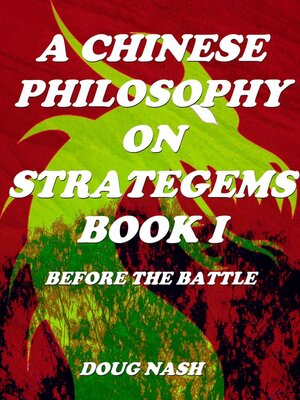
Sign up to save your library
With an OverDrive account, you can save your favorite libraries for at-a-glance information about availability. Find out more about OverDrive accounts.
Find this title in Libby, the library reading app by OverDrive.



Search for a digital library with this title
Title found at these libraries:
| Library Name | Distance |
|---|---|
| Loading... |
How fortunate are we that both Julius Frontinus and Sun Tzu recorded their hard learned and surely at times bitter experiences with conflict, war and battles. Doubly so when it seems that they recorded their thoughts for the exact same reason, to educate those who followed.
Each book is brilliant and both have its flaws. Stratagems as a collection of real life generals, commanders and battles is a must for every library dealing with war and conflict. This book brings reveals that war is not something to be played at or taken for granted. However while we can read how a commander or general achieved their victories, Stratagems does not really record what elements, key moves, thoughts, actions, planning etc produced either victory or defeat.
The Art of War, on the other hand, details the intangibles that achieve victory however lacks the personal or real life instances. As a result the book is at times hard to understand or relate to real life situations.
Together, real life and the theory combine for powerful, revealing and inspiring insights for achieving achieve victory and success.
Battles consist of the tangible and the intangible. That which can be seen and that which cannot be seen. It is the test of a great leader and commander to be able to understand what can't be seen by what he can see. In essence we can say that Frontinus wrote about the tangible and Sun Tzu wrote about the intangible. Together they offer a breathtaking insight to winning battles, avoiding conflict, leadership, tactics and so much more. Strategemata and the Art of War are perfect companion books. If you own one, you need to own the other to achieve the best understanding of both books. Frontinus tells you what happened. Sun Tzu gives you a chance to understand why the result came about. Both books are extensive but not exhaustive.
Not all maxims of both books are used as in some cases there is no direct correlation between specific Sun Tzu maxims and Frontinus examples. The examples that follow a maxim displays that maxim in a slightly or vastly different situation. They demonstrate the versatility of the maxims in the Art of War. This highlights the reasons the Art of War is so difficult to master. Applying the philosophies of Sun Tzu to open up many levels of the examples collected by Frontinus is most beneficial. The examples of Frontinus open up the maxims of Sun Tzu.
Imagine that the maxims in the Art of War is the mind and soul of a commander while the examples of Strategemata are the flesh that can be used to bring the words and lessons to life. In the case of the Art of War, there are times that two maxims must be read as one to reap the most of the principle or point being made. So usually there will be just one AOW maxim and at other times there may be two or more.
Strategemata expounds a philosophy on war similar to the Art of War. At times it is also worthwhile to compare the chapter titles of each book where the maxims and examples come from. The example of Marcus Porcius Cato in Book I.I. On Concealing One's Plans, are better understood after reading maxims from Chapter II. Waging war, Chapter III. Attack by stratagem, Chapter VI. Weak points and strong and Chapter VII. Maneuvering of the Art of War. Knowledge is strength, understand is power.
One of the reasons the Art of War is so difficult to master is that there are so many angles, outcomes and situations to consider. This is the main reason why it is my belief the Art of War is a philosophy and not a manual.
So we are dealing with two war philosophies from two very different yet uncannily similar cultures from two thousand years ago. The lessons of these giants have stood the...







